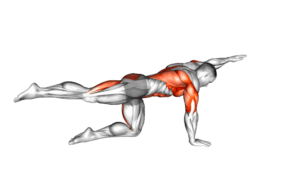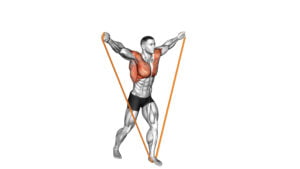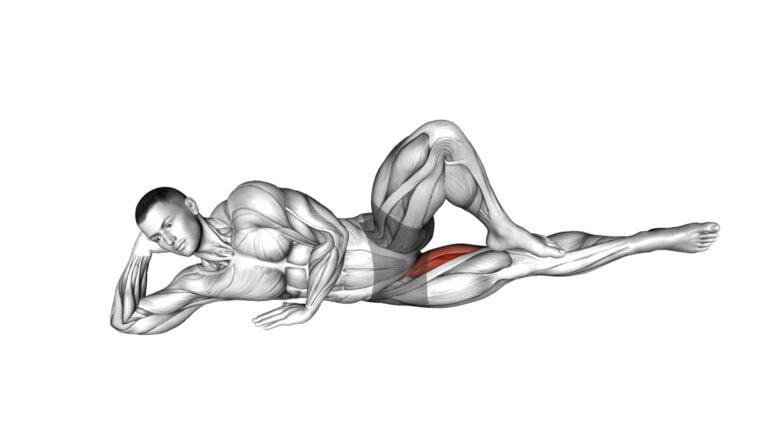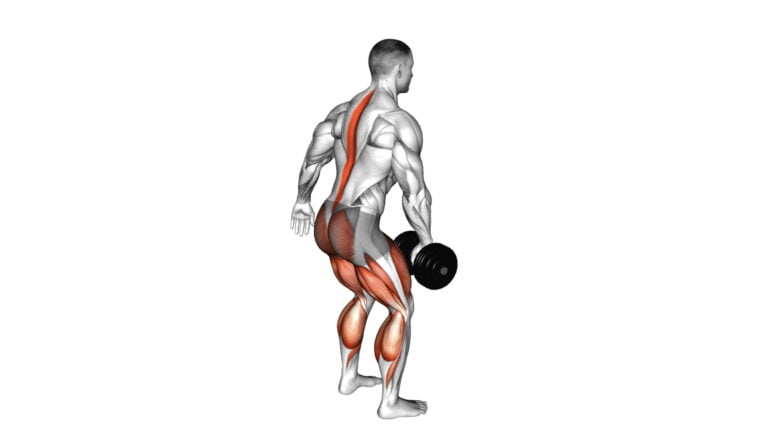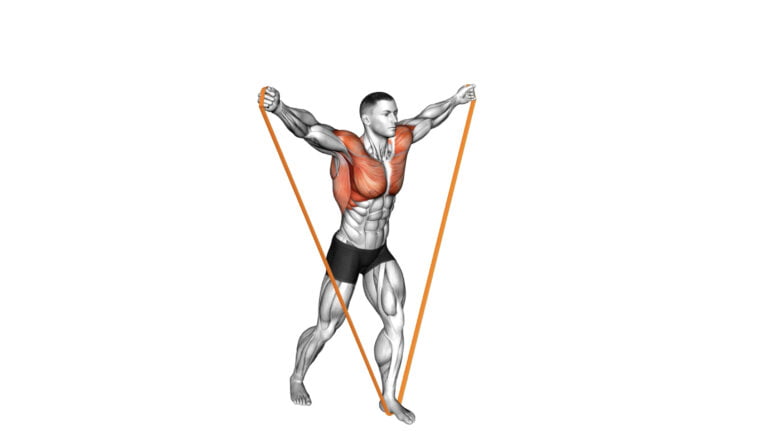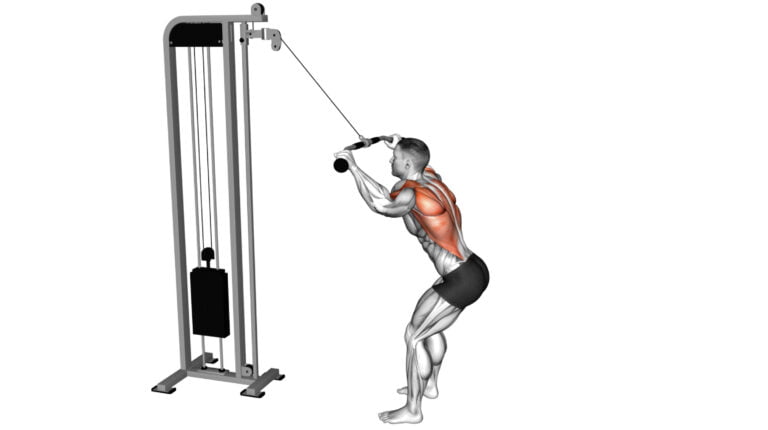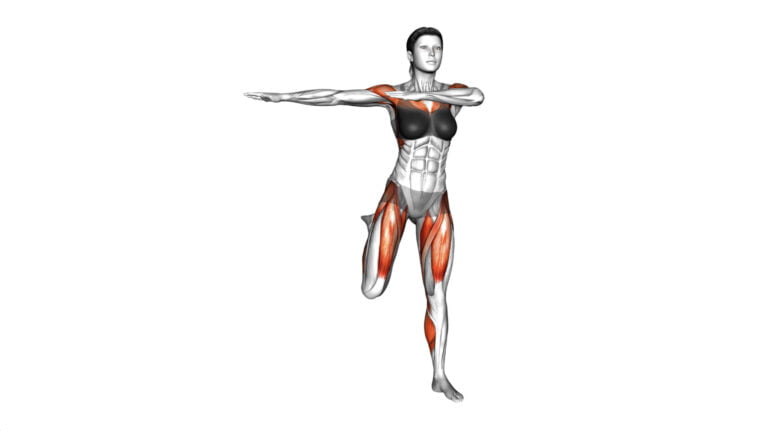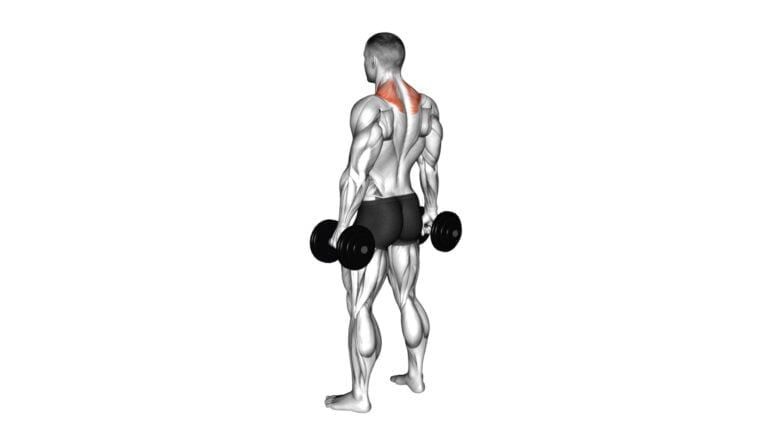Discover The Top 10 Best Posture Exercises For Seniors To Improve Alignment And Mobility
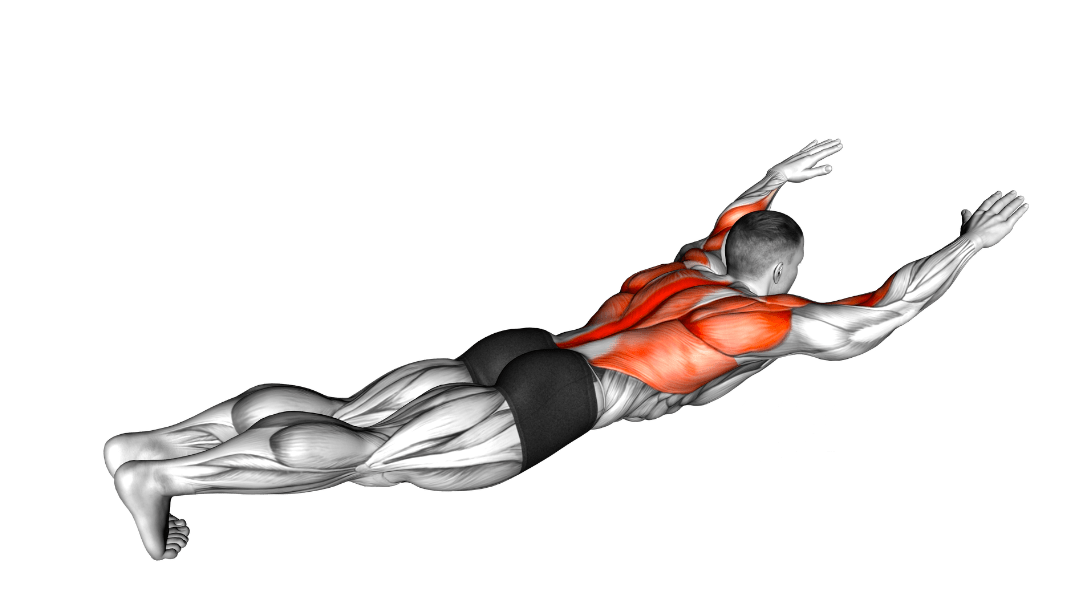
Welcome to a journey towards better health and well-being! As we age, maintaining proper posture becomes increasingly crucial for an active and pain-free lifestyle. For seniors, the quest for spinal alignment and mobility isn’t just about standing tall; it’s about ensuring independence and quality of life.
The best posture exercises for seniors can make all the difference in achieving these goals.
Let’s delve into why good posture matters as you enjoy your golden years and explore exercises designed with older adults in mind—each carefully chosen to enhance stability without overwhelming exertion.

Your commitment to these simple movements could pave the way to newfound freedom in daily activities. Prepare to uncover how small changes can lead to significant improvements; let’s get aligned!
Key Takeaways
- Incorporating a variety of posture exercises such as Sitting Scapular Adduction and Lying Prone W to Y can strengthen key muscle groups in seniors, enhancing stability and reducing the risk of falls.
- Regularly practicing tailored stretches like Seated Lower Back Stretch and Standing Reach – Up Back Rotation Stretch helps maintain spinal alignment, promoting flexibility and aiding with balance and functional independence.
- Attention to proper form is crucial when performing exercises; modifications may be necessary based on individual capabilities to ensure safety and achieve optimal results without injury.
- A combination of regular physical activity, proper nutrition including calcium – rich foods or supplements, ergonomic equipment use, along with specific posture exercises contributes significantly to improved senior mobility and alignment.
- Seeking guidance from fitness professionals can provide customized routines that mitigate risks associated with incorrect exercise practices while maximizing the benefits for better senior health.
Why Good Posture is Important for Seniors
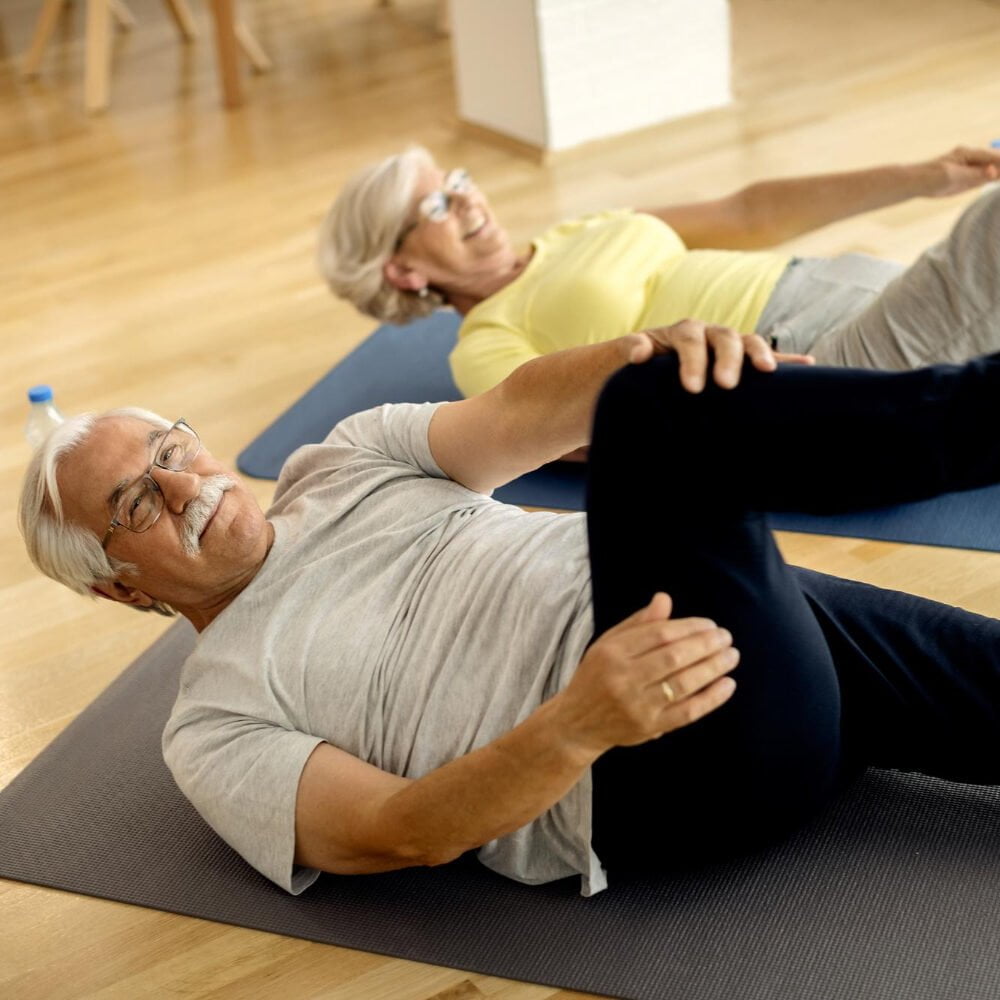
Good posture is essential for seniors as it’s the foundation of well-being and mobility. As we age, maintaining an upright position can combat common issues related to aging such as chronic pain, impaired balance, and decreased confidence in movement.
Keeping a straight back helps with deeper breathing and better digestion because organs aren’t compressed. It also means muscles work more efficiently, leading to less fatigue.
Having good alignment plays a crucial role in reducing the risk of falls—one of the biggest concerns for older adults. Strong posture aligns bones and joints correctly so that muscles are used properly, lowering the wear-and-tear on joint surfaces which could lead to painful arthritis.
It supports a lifestyle that embraces independence by boosting overall functionality—making everyday tasks easier and safer. Choosing the best posture exercises for seniors can greatly contribute to achieving these health goals with grace and strength.
Top 10 Posture Exercises for Seniors
Discover the best posture exercises for seniors that can improve alignment and mobility, including sitting scapular adduction, standing reach-up back rotation stretch, lying prone W to Y, and more.
These exercises are designed to help seniors maintain good posture and prevent common age-related issues like back pain and stiffness.
1. Sitting Scapular Adduction
Sitting Scapular Adduction is a fantastic exercise that targets the muscles around your shoulder blades, helping to pull them back and down. This movement is key for maintaining an upright posture and can significantly reduce the hunchback effect that years of slouching may have created.
Engage in this activity by sitting up straight on a sturdy chair with feet firmly planted on the ground. Hold your arms down at your sides, then gently squeeze your shoulder blades together while keeping your spine tall.
Feel the muscles between your shoulders working as you hold the squeeze for a few seconds before releasing. Repeat this action multiple times to strengthen those postural muscles effectively.
Keeping these muscle groups strong ensures better support for your upper body and fosters alignment crucial for balance and mobility in daily activities. Next on our list is the Seated Lower Back Stretch—a perfect follow-up to enhance flexibility along with strength gained from Sitting Scapular Adduction.
2. Seated Lower Back Stretch
The Seated Lower Back Stretch targets key muscles to help reduce stiffness and improve flexibility in the lumbar region. To perform this stretch, seniors should sit on a sturdy chair with feet planted flat on the floor.
Keeping their back straight, they gently lean forward from the hips, reaching toward their toes while maintaining a straight spine. This movement stretches the lower back muscles effectively and can aid in relieving tension that accumulates from everyday activities.
Holding this stretch for about 15-30 seconds allows for a deep release of tightness and encourages better posture by lengthening the muscles of the lower back. Regular practice contributes to overall mobility and alignment, making it easier to maintain an upright posture during other daily tasks.
Transition smoothly into our next movement—the Standing Reach-Up Back Rotation Stretch—for continued postural training and alignment benefits.
3. Standing reach-up back rotation stretch
To perform the standing reach-up back rotation stretch, stand with your feet hip-width apart. Reach both hands up toward the ceiling and then slowly rotate your upper body to one side while keeping your hips facing forward.
Hold the stretch for 20-30 seconds, feeling the gentle twist in your spine. Repeat on the other side. This exercise helps improve flexibility in the back and shoulders, promoting better posture and reducing stiffness.
Next, let’s explore another effective posture exercise that targets scapular slide back to wall for seniors seeking improved alignment and mobility.
4. Scapular Slide Back to Wall
Stand with your back against a wall and feet about six inches away. Keep your shoulders relaxed and elbows at 90 degrees; then slide your arms up the wall, stretching them as high as comfortably possible without allowing the lower back to arch off the wall.
Hold for a few seconds, then slowly slide the arms back down to complete one repetition.
This exercise targets the muscles around the shoulder blades and upper back, helping to improve posture by strengthening these areas. It also promotes mobility in the shoulders and upper spine, which can aid in reducing stiffness and discomfort commonly experienced by seniors.
5. Pulse Row
Engage your upper back muscles and improve your posture with the pulse row exercise. Begin by standing with feet shoulder-width apart, holding a resistance band or cable machine handles at waist height.
Pull the band towards you, squeezing your shoulder blades together. Then, return to the starting position and repeat in a controlled, pulsing motion. This exercise targets the rhomboids and trapezius muscles, enhancing strength and stability in your upper back.
Practice proper form to avoid strain – keep your core engaged throughout the movement and maintain control as you pulse. Gradually increase resistance as you build strength for more effective results without compromising safety.
6. Lying Prone W to Y
To perform the lying prone W to Y exercise, start by lying facedown on the floor with your arms extended in front of you. Keep your palms facing inward and lift your chest slightly off the ground by engaging your back muscles.
Then, raise both arms outward to form a “W” shape before extending them further overhead into a “Y” position. Hold for a moment and then return to the starting position. This exercise targets the muscles in your upper back, shoulders, and neck, helping to improve posture and strengthen key support muscles.
The lying prone W to Y exercise is beneficial for seniors as it helps counteract the effects of slouching and forward head posture while promoting better alignment. This targeted movement also enhances shoulder mobility and stability, which can contribute to overall functional abilities such as reaching overhead or carrying out daily tasks with ease.
7. Lying Floor Row with Bent Knee
Lie on your stomach with your knees bent and feet flat on the floor. Keep your arms extended straight in front of you, palms facing each other. Engage your back muscles and pull both arms back, bending at the elbows and squeezing your shoulder blades together.
Hold this position for a few seconds before slowly returning to the starting position. This exercise targets the upper back and helps improve posture by strengthening the muscles that support proper alignment.
As you perform the lying floor row with bent knee exercise, focus on keeping your neck in a neutral position to avoid straining it. Be mindful of maintaining a stable core to support your lower back throughout the movement.
Incorporate this exercise into your routine to enhance postural strength and stability, promoting better overall body alignment.
8. Lying Lat Pulldown
Transitioning from the lying floor row with bent knee to the lying lat pulldown, this exercise targets the lats, shoulders, and upper back muscles. To perform this movement, lie down on your back with your knees bent and feet flat on the floor.
Grasp a resistance band or cable attachment securely above you, then pull it towards your chest while keeping your elbows close to your body. Slowly return to the starting position and repeat for a set number of reps.
This exercise is beneficial for seniors as it helps improve posture by strengthening the upper back muscles that support an upright stance. The lying lat pulldown also aids in enhancing overall upper body strength and can contribute to better mobility and stability during daily activities.
9. Lying Floor Slide
Transitioning from the Lying Lat Pulldown to the Lying Floor Slide, this exercise targets the lower back, glutes, and inner thighs. To perform this movement, lie on your back with knees bent and feet flat on the floor.
Slowly slide one foot outwards along the floor until your leg is almost straight, then return to the starting position and repeat with the opposite leg. This exercise helps to improve hip mobility and strengthen the inner thigh muscles while engaging your core for stability.
Engage in controlled movements during this exercise to prevent straining any muscles or joints. Remember to breathe steadily throughout each repetition, maintaining a smooth rhythm without holding your breath.
10. Kneeling Back Rotation Stretch
To perform the kneeling back rotation stretch, start on your hands and knees with a flat back. Place one hand behind your head with your elbow pointing out to the side. Then, gently rotate your torso while lifting the opposite arm toward the ceiling.
Hold this position for a few seconds before returning to the starting position and repeating on the other side. This exercise helps improve spinal mobility, stretches back muscles, and promotes flexibility in the upper body.
As you engage in this exercise regularly, you will notice increased range of motion in your spine and shoulders, leading to enhanced overall posture alignment and reduced stiffness.
Tips for Safely Performing Posture Exercises
To safely perform the best posture exercises for seniors, it’s important to start slowly and listen to your body. Use proper form, modify exercises as needed, and seek guidance from a professional if necessary.
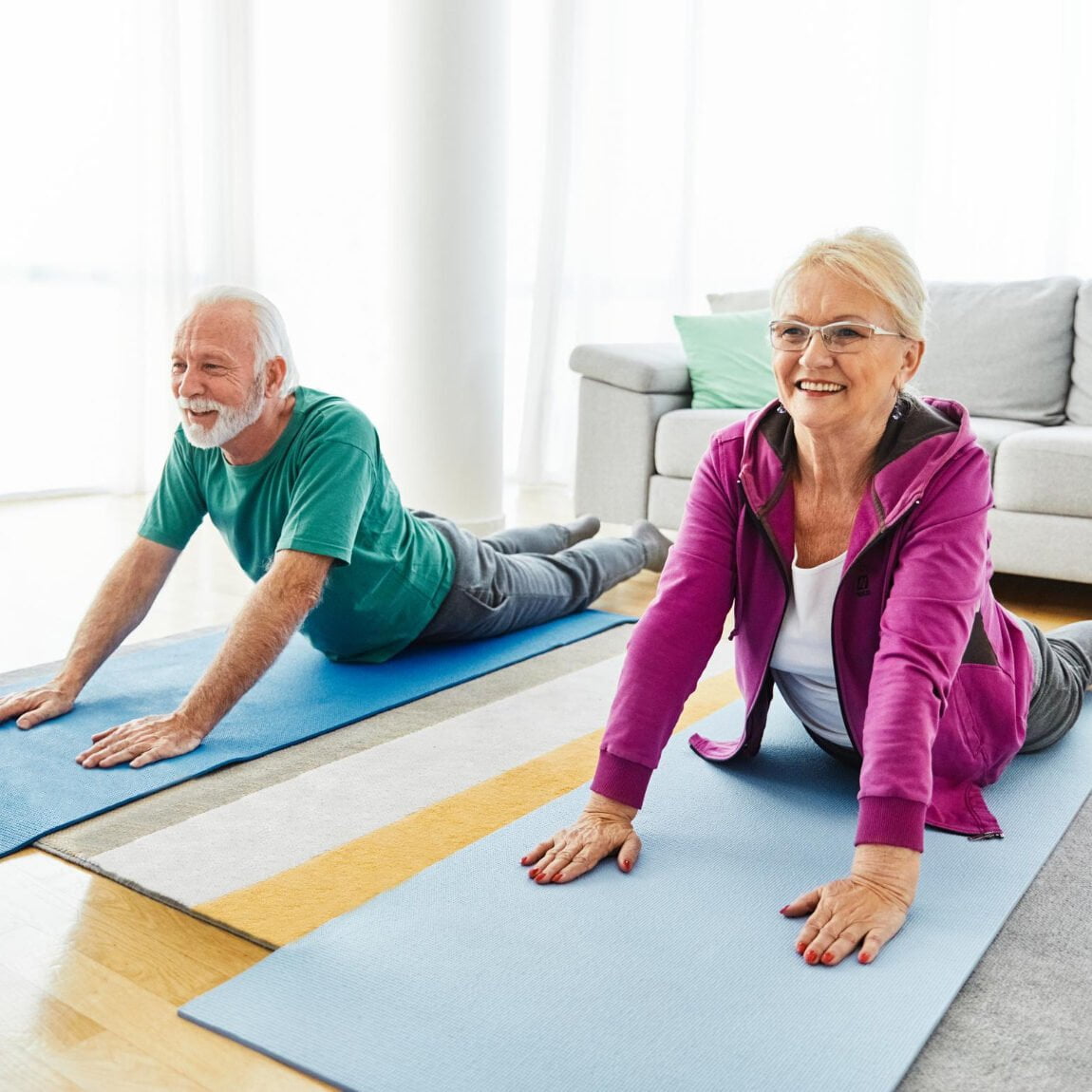
Start slowly and listen to your body
Gradually ease into the exercises, paying attention to any discomfort or strain. Adjust your pace and range of motion based on how your body feels. Rest if you experience pain or dizziness.
Monitor how your body responds during each exercise. If something doesn’t feel right, modify the movement or stop altogether. Trust your instincts and prioritize safety throughout every posture exercise session.
Use proper form
To perform the posture exercises effectively, maintain proper form throughout each movement. This involves aligning your body correctly and engaging the targeted muscles. Focus on keeping your back straight, shoulders relaxed, and core engaged to support your spine.
Ensure that you follow the specific instructions for each exercise to avoid strain or injury. Pay attention to your breathing pattern as you perform the movements, exhaling during exertion and inhaling during relaxation.
By using proper form, you can maximize the benefits of these posture exercises while minimizing the risk of discomfort or injury.

Modify exercises as needed
To ensure the safety and effectiveness of your posture exercises, it’s crucial to modify them as needed based on your individual capabilities. Pay attention to any discomfort or pain during the exercises and make adjustments accordingly.
For example, if a standing reach-up back rotation stretch is challenging, try performing it in a seated position instead. Similarly, for lying prone W to Y exercise, start with smaller movements and gradually increase range of motion as you build strength.
By modifying the exercises according to your comfort level and physical abilities, you can tailor your workout to suit your body’s specific needs.
Adapting posture exercises is essential for seniors with varying levels of mobility and flexibility. Listen closely to what your body tells you during each exercise; if something doesn’t feel right, find an alternative movement that still targets the relevant muscle groups.
Seek guidance from a professional
Before starting any new exercise regimen, including posture exercises, it’s crucial to seek guidance from a professional. A physical therapist or certified fitness trainer can provide personalized advice and ensure that the exercises are safe and appropriate for your individual needs.
They can also help modify the exercises as needed and teach you proper form to prevent injury while maximizing benefits. Seeking professional guidance is an essential step in creating a safe and effective posture exercise routine tailored to your specific requirements, helping you achieve optimal results while minimizing the risk of strain or injury.
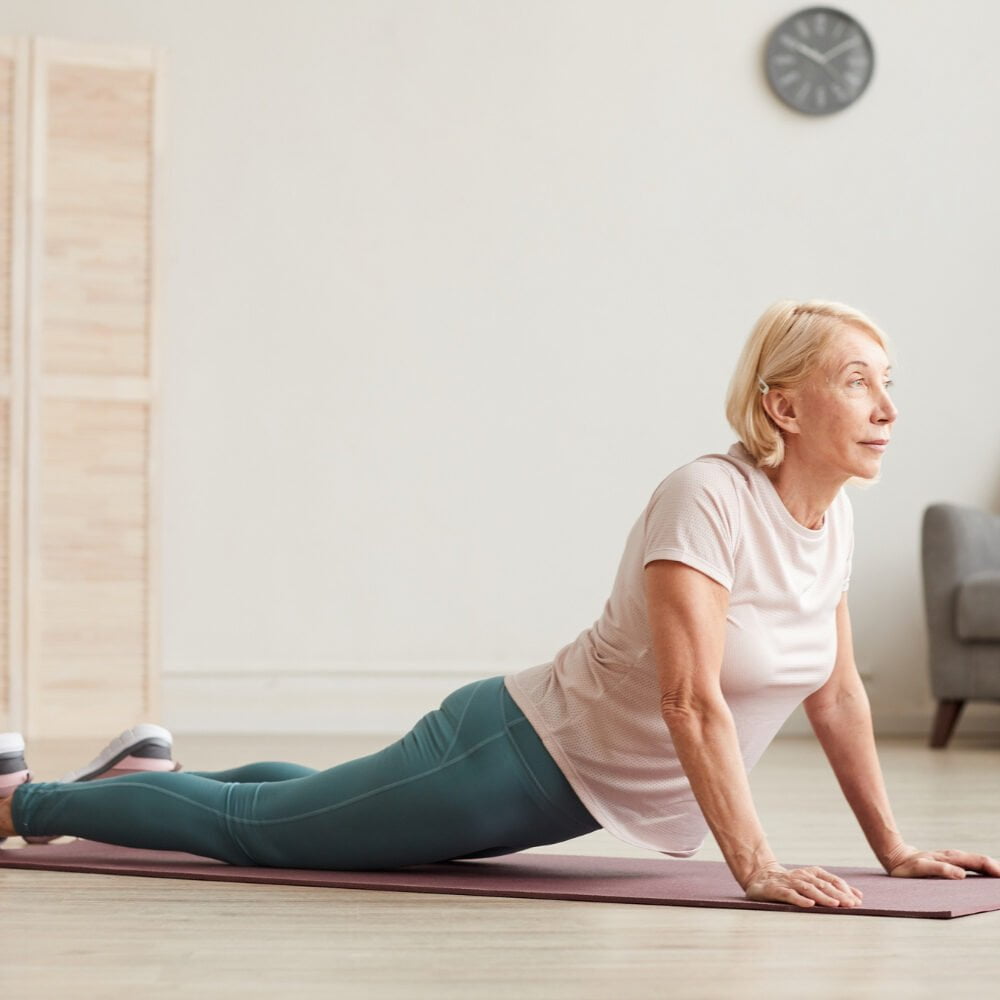
Other Ways Seniors Can Improve Posture and Mobility
In addition to the posture exercises, seniors can improve their alignment and mobility by eating a balanced diet, taking calcium and vitamin D supplements, staying physically active, doing regular stretching and strengthening exercises, and using ergonomic equipment.
To learn more about these effective ways to enhance posture and mobility as a senior, keep reading for valuable tips and insights.
Eat a balanced diet
Achieving and maintaining good posture for seniors includes not only physical exercises but also proper nutrition. Eating a balanced diet rich in fruits, vegetables, lean proteins, whole grains, and healthy fats contributes to overall health and supports strong bones and muscles.
Consuming a variety of nutrient-dense foods provides essential vitamins and minerals that aid in bone density and muscle function, promoting better posture and mobility. Incorporating calcium-rich foods such as dairy products or fortified plant-based alternatives can enhance bone strength while ensuring an adequate intake of vitamin D supports calcium absorption.
A balanced diet also helps manage weight, reducing the strain on joints and supporting optimal musculoskeletal health. Additionally, staying hydrated is crucial for maintaining supple connective tissues which are essential for good posture.
Take calcium and vitamin D supplements
Ensure adequate intake of calcium and vitamin D supplements to support bone health and overall mobility. Incorporating these essential nutrients into your daily routine can help maintain strong bones, reducing the risk of fractures and enhancing posture stability.
By prioritizing your intake of these supplements, you’re taking proactive steps to fortify your skeletal system, which is crucial for maintaining an active lifestyle and preventing posture-related issues commonly faced by seniors.
By consistently including calcium and vitamin D in your regimen, you are empowering your body with the fundamental building blocks necessary for optimal bone strength and density. This proactive approach lays a solid foundation for improved posture as well as enhanced mobility in daily activities, offering long-term benefits for physical well-being.
Stay physically active
Engage in regular physical activity to strengthen muscles, improve balance, and maintain flexibility. Perform exercises such as walking, swimming, or tai chi to enhance posture and mobility.
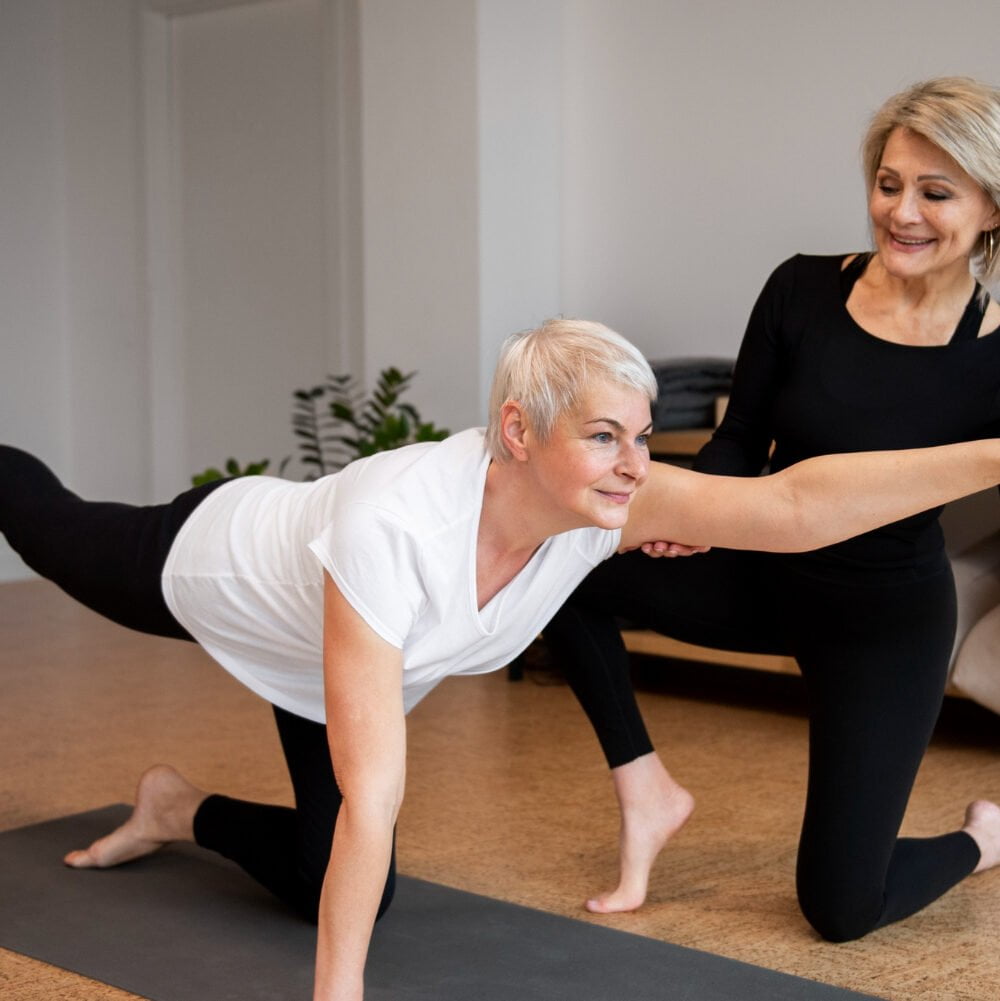
Incorporating activities that you enjoy into your routine can help you stay motivated and committed.
Consistency is key when it comes to physical activity. Set achievable goals for yourself and gradually increase the intensity of your workouts over time. By staying physically active, seniors can experience improved overall well-being and a greater sense of independence in their daily lives.
Do regular stretching and strengthening exercises
Engage in regular stretching and strengthening exercises to maintain flexibility, improve muscle tone, and support your posture. Incorporating activities like yoga or Pilates can help you build core strength and enhance balance, reducing the risk of falls.
These exercises also promote joint mobility, alleviating stiffness and discomfort associated with poor posture.
By committing to a routine that includes regular stretching and strengthening exercises, seniors can experience improved overall physical well-being as these activities support better posture alignment while enhancing mobility for daily activities.
Use ergonomic equipment
Invest in ergonomic equipment to support your posture and mobility. Look for chairs with proper lumbar support and adjustable armrests to keep your body aligned while sitting. Consider using a height-adjustable desk that allows you to switch between sitting and standing positions, reducing strain on your back and legs.
Additionally, invest in an ergonomic keyboard and mouse to minimize wrist and hand discomfort. These adjustments can significantly improve your comfort level while promoting better posture habits throughout the day.
Integrating ergonomic equipment into your daily routine can make a noticeable difference in how you feel physically. Embrace these tools as valuable assets in maintaining good posture and mobility, allowing you to move through your daily activities with greater ease and comfort.
Conclusion

Improve your alignment and mobility through these top 10 posture exercises for seniors. Take control of your health by incorporating these exercises into your daily routine. Strengthening and stretching with these movements can lead to better posture and increased flexibility.
Enhance your overall well-being by embracing the benefits of regular exercise at any age.
FAQs
Q: What are some common posture problems that seniors experience?
A: Seniors often experience poor posture, which can lead to issues such as neck pain, lower back pain, and reduced mobility.
Q: How can wall tilts help seniors improve their posture?
A: Wall tilts are an effective exercise for seniors to improve their posture by strengthening their pelvis and gluteal muscles, which are essential for maintaining proper alignment.
Q: What are chin tucks and how can they benefit seniors?
A: Chin tucks are a simple yet effective exercise to improve posture in seniors by strengthening the neck and shoulder muscles, helping them maintain a proper alignment and reduce neck pain.
Q: Why is it important for seniors to work on their posture?
A: Improving posture in seniors is crucial to maintaining mobility, reducing the risk of injury, and alleviating common issues such as lower back pain and neck discomfort.
Q: Can exercises to improve posture help seniors with lower back pain?
A: Yes, specific exercises to improve posture can aid in reducing lower back pain by strengthening the abdominal and lower back muscles, improving alignment and reducing strain on the spine.
Q: How can tuck exercises benefit seniors with poor posture?
A: Tuck exercises can help seniors improve their posture by engaging the abdominal muscles and promoting a tucked pelvis, which is essential for supporting the lower back and maintaining proper alignment.
Q: Are there easy exercises that seniors can do at home to improve their posture?
A: Yes, there are several easy exercises seniors can do at home to improve their posture, such as wall tilts, chin tucks, and gentle stretches to alleviate the effects of poor posture.
Q: Can seniors improve their posture by simply sitting or standing in a certain way?
A: Yes, simply being mindful of their posture while sitting or standing and making a conscious effort to keep their shoulders back and pelvis aligned can help seniors improve their posture over time.
Q: What are some exercises to fix bad posture in seniors?
A: Seniors can benefit from exercises that focus on strengthening the core muscles, stretching tight muscles, and practicing mindful alignment, such as chin tucks, wall tilts, and gentle shoulder stretches.
Q: How can seniors benefit from using exercises to improve posture in their daily routine?
A: Integrating exercises to improve posture into their daily routine can help seniors reduce the effects of poor posture, alleviate discomfort, and improve their overall mobility and quality of life.

Author
Years ago, the spark of my life’s passion ignited in my mind the moment I stepped into the local gym for the first time. The inaugural bead of perspiration, the initial endeavor, the very first surge of endorphins, and a sense of pride that washed over me post-workout marked the beginning of my deep-seated interest in strength sports, fitness, and sports nutrition. This very curiosity blossomed rapidly into a profound fascination, propelling me to earn a Master’s degree in Physical Education from the Academy of Physical Education in Krakow, followed by a Sports Manager diploma from the Jagiellonian University. My journey of growth led me to gain more specialized qualifications, such as being a certified personal trainer with a focus on sports dietetics, a lifeguard, and an instructor for wellness and corrective gymnastics. Theoretical knowledge paired seamlessly with practical experience, reinforcing my belief that the transformation of individuals under my guidance was also a reflection of my personal growth. This belief holds true even today. Each day, I strive to push the boundaries and explore new realms. These realms gently elevate me to greater heights. The unique combination of passion for my field and the continuous quest for growth fuels my drive to break new ground.






